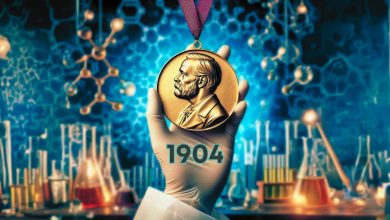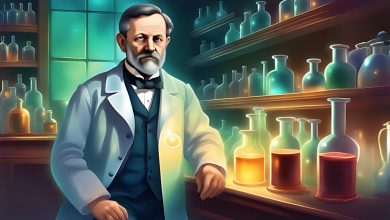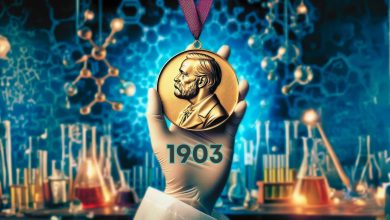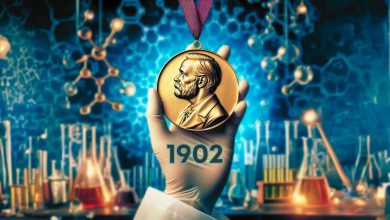Nobel Chemistry Award – 1905 – Johann Friedrich Wilhelm Adolf von Baeyer
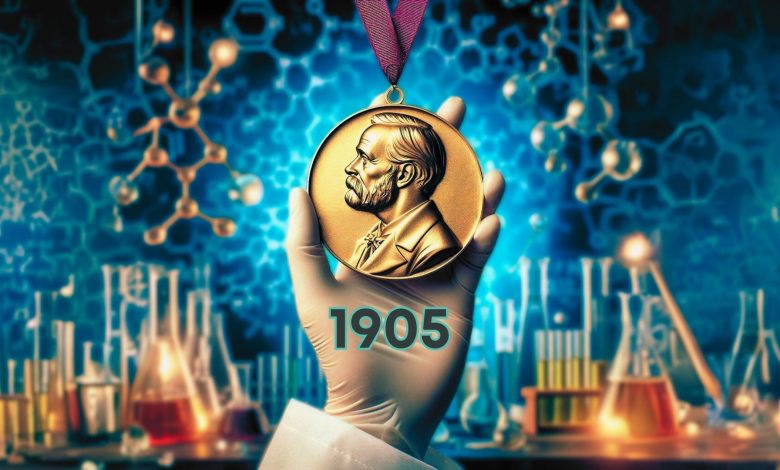

“In recognition of his services in the advancement of organic chemistry and the chemical industry, through his work on organic dyes and hydroaromatic compounds.”
Born in 1835, the German chemist won the fifth Nobel Prize in Chemistry. Baeyer, known simply as Adolf Baeyer in his daily life, achieved many successes in the field of organic chemistry. These achievements have been used in many fields in industry as well as academia.
Organic chemistry is the field of chemistry that deals with the element carbon and the molecules it forms. Since the element carbon can easily bond with other carbons and other elements, there are millions of organic molecules today. The bonds formed between carbons can be arranged side by side to form a chain, or they can take the form of a ring. These ring structures contain alternating double and single bonds between carbon atoms. These molecules are called aromatic hydrocarbons.

Baeyer’s main focus as an organic chemist was the synthesis of some organic molecules used as dyes. Indigo dye is the best-known of the dyes that Baeyer successfully synthesized. He also discovered the organic molecule phenolphthalein. Phenolphthalein is an acid-base indicator widely used in many areas of chemistry. As the acidity value changes, phenolphthalein changes color, making it easier to monitor the acidity of the medium. Phenolphthalein, which is colorless in acidic media, is pink in basic media.
Following this success, Baeyer synthesized the first synthetic fluorescein in the same year. Fluorescein is a yellow/orange dye that fluoresces under blue light. Fluorescein is a dye used in medical imaging. It is used to visualize the vessels of the eye and other vessels.
In addition to the many organic dyes he successfully synthesized, Baeyer discovered the structure of many different organic compounds with great accuracy. The indole molecule is one of the most important of these. He also worked on derivatives of uric acid.
With the dyes he discovered, the mechanisms he proposed, and the molecules whose structure he proved, Adolf Baeyer made many substances that are still used today available to chemists and thus was awarded the 1905 Nobel Prize in Chemistry. He was regarded as one of the world’s best in his field as a professor, a position he held until the year of his death.
References and Further Reading
The Nobel Prize in Chemistry 1905. (n.d.). NobelPrize.org. https://www.nobelprize.org/prizes/chemistry/1905/summary/
Schleyer, P. v. R. (2001). “Aromaticity (Editorial)”. Chemical Reviews. Cilt 101. ss. 1115-1118
Elmar Steingruber “Indigo and Indigo Colorants” Ullmann’s Encyclopedia of Industrial Chemistry 2004, Wiley-VCH, Weinheim. DOI:10.1002/14356007.a14_149.pub2 10.1002/14356007.a14_149.pub2
Adolf Baeyer (1885). “Ueber Polyacetylenverbindungen (Zweite Mittheilung)” [On polyacetylene compounds (Part II)]. Berichte der deutschen chemischen Gesellschaft. 18 (2): 2269–2281. doi:10.1002/cber.18850180296. See especially pages 2277-2281
One or more of the preceding sentences incorporates text from a publication now in the public domain: Chisholm, Hugh, ed. (1922). “Baeyer, Johann Friedrich Wilhelm Adolf von”. Encyclopædia Britannica. Vol. 30 (12th ed.). London & New York: The Encyclopædia Britannica Company. p. 365.
Racino, B., Castellano, J., Racino, B., & Castellano, J. (2021, April 20). UCSD eye doctor broke human research rules, putting patients at risk. Inewsource.https://inewsource.org/2019/04/18/kang-zhang-ucsd-human-research-violations/



